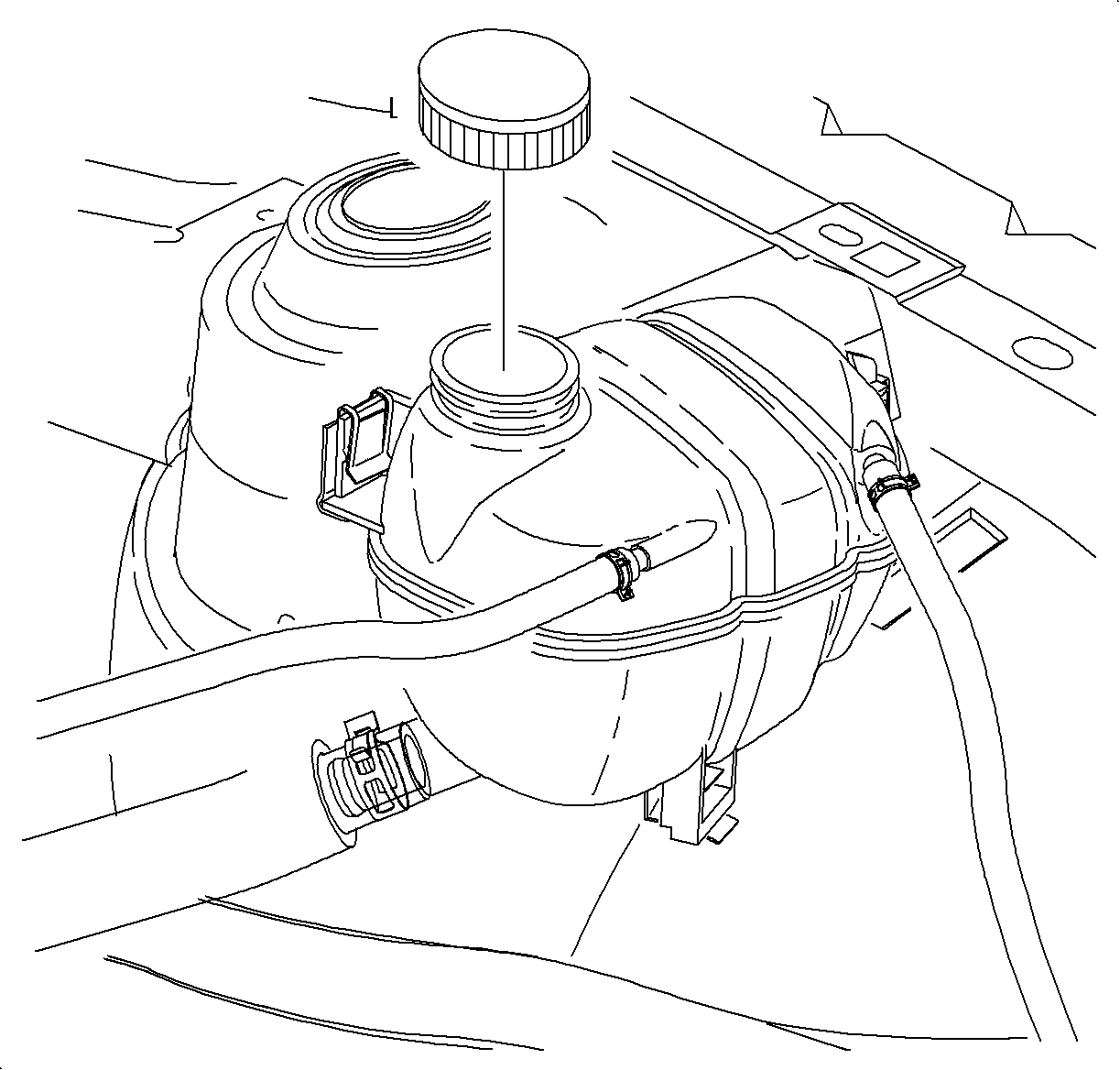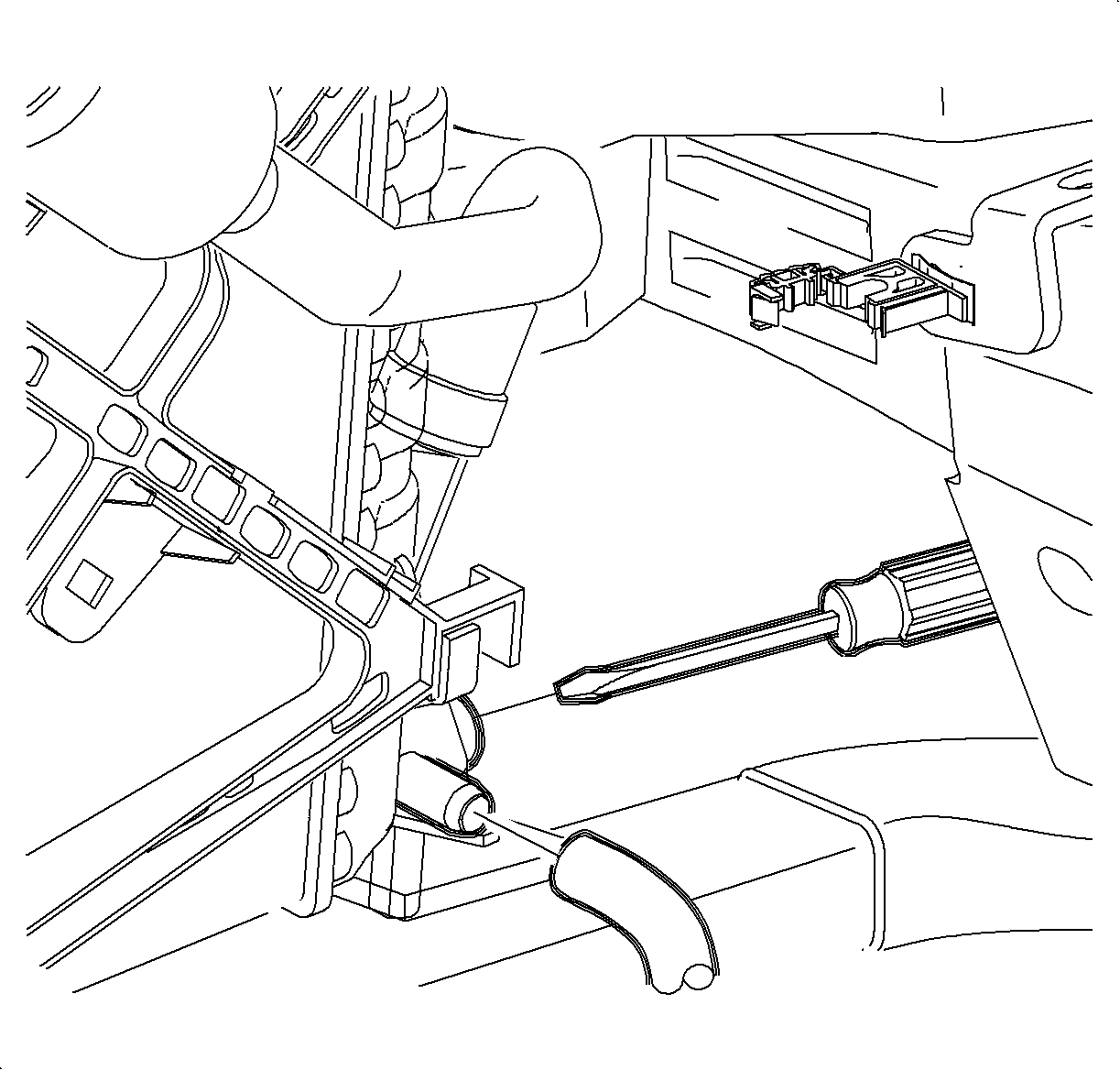Coolant Level
The engine coolant level can be inspected at the engine coolant surge tank. The coolant level should be inspected when the system is cool and not under pressure. The coolant level should be at the cold line, also called the surge tank seam, on the coolant tank. If the coolant level is low, inspect the system for leaks, and then slowly open the coolant surge tank cap. Add the coolant until the level reaches the cold line.
Coolant Quality
Inspect the quality of coolant. There should not be any rust deposits, scale, or oil in the surge tank or on the coolant cap. If the coolant is excessively dirty, the cooling system should be flushed and the cap replaced.
Draining Procedure
- Remove the surge tank cap.
- Raise the vehicle. Refer to Lifting and Jacking the Vehicle in General Information.
- Remove the lower cradle splash shield fasteners.
- Remove the lower cradle splash shield (2).
- Slide a pliable piece of hose with an inside diameter of 3/8 in over the radiator drain tube.
- Route the hose rearward and down to a 7.6 L (8 qt) coolant container.
- Use a flat bladed tool or a pliers to open the radiator drain valve 1-2 turns only.
- Inspect the coolant.
- Follow the appropriate procedure based on the condition of the coolant.

Caution: To avoid the danger of being burned, do not remove the cap while the engine, radiator, and surge tank are still hot. Scalding fluid and steam can be blown out under pressure.


Important: Failure to use a drain hose will result in uncontrolled coolant flow direction.
Approximately 3.5 L (4 qt) of coolant can be drained from the radiator. Additional coolant will remain in some cooling system components.
| • | Normal in appearance -- follow the filling procedure below. |
| • | Discolored -- follow the flush procedure. Refer to Coolant System Flushing . |
Filling Procedure
Tools Required
J 26568 Coolant and Battery Tester
- Close the coolant drain valve and remove the drain hose.
- Install the lower cradle splash shield (2).
- Install the fasteners to the lower cradle splash shield.
- Slowly fill the cooling system with a 50/50 mixture of GM Goodwrench DEX-COOL® or HAVOLINE® DEX-COOL® and clean, drinkable water. Refer to Approximate Fluid Capacities in General Information.
- Install the surge tank cap.
- Start the engine.
- Run the engine at 2,000-2,500 RPM until the engine reaches normal operating temperature.
- Allow the engine to idle for 3 minutes.
- Shut the engine off.
- Allow the engine to cool.
- Top off the coolant as necessary.
- Using J 26568 , inspect the concentration of the engine coolant.
- Rinse away any excess coolant from the engine and the engine compartment.
Notice: The procedure below must be followed. Improper coolant level could result in a low or high coolant level condition, causing engine damage.

Notice: Refer to Fastener Notice in the Preface section.
Tighten
Tighten the fasteners to 5 N·m (44 lb in).
The coolant level should be at the cold line on the coolant tank.
